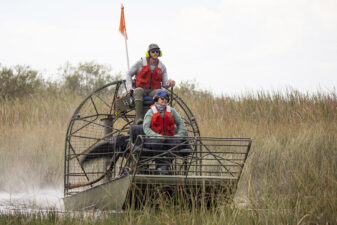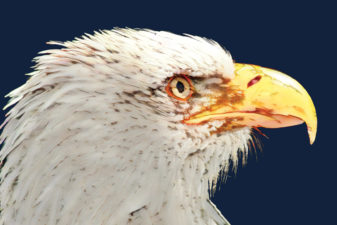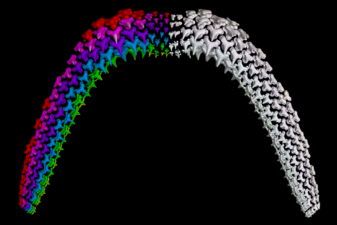U niversity of Florida researcher Daniel Swale describes his work in the simplest of terms: He studies the most lethal...
Invasive species in Florida like Nile monitors and Argentine black-and-white tegus pose a growing threat to the Sunshine State’s environment,...
A new program is training thousands of recreational anglers with equipment to release reef fish safely, helping protect fisheries along...
A hiss emerges from a plastic bin, rising over the noise from a nearby highway. On a levee at the...
The man who founded the Florida Museum of Natural History more than 100 years ago had a clear purpose: to...
Most spiders don’t see in color. Not so for jumping spiders, tiny show-offs who flaunt their vivid stripes and fluffy...
University of Florida history Professor Jack E. Davis has made a career out of writing about big environmental topics. He...
University of Florida entomologist Jiri Hulcr loves each of the 6,000 species of bark beetles, and he wants you to...
You’ve probably heard of probiotics’ role in creating a healthy gut biome. But what if they could help coral reefs,...
DNA “fingerprints” left behind by sea turtles offer scientists a simple, powerful way of tracking the health and whereabouts of...
E.O. Wilson once referred to invertebrates as “the little things that run the world,” without whom “the human species [wouldn’t]...
When UF evolutionary biologist Gareth Fraser gives a talk titled “Why sharks are the future of dentistry” at dental conferences,...












